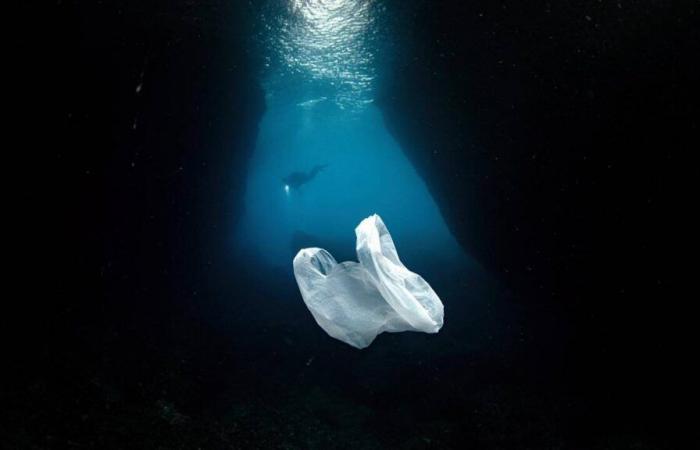Posted on May 08, 2025 at 20:03. / Modified on May 08, 2025 at 21:21.
Off the Philippines, plastic particles were found even in the Mariannes pit, 6.8 kilometers deep. The result of ten years of data collected in the oceans around the world to estimate the extent of plastic pollution in the marine environment. This research is published in the journal “Nature”, in which scientists claim to have found large quantities of microplastics in several depths of the oceans.
For the Swiss Matthias Egger, director of environmental and social affairs for the NGO The Ocean Cleanup, these new results come to provide better knowledge of ocean pollution: “Most studies have focused on the surface layer of the ocean. However, we do not understand very well how microplastics move in the ocean. If we do not know where the microplasticism is and where it is, it is very difficult to determine the damage it causes to the ecosystem and to our planet ”.
Plastic in the oceans on the plate
On the surface or in depth, the accumulation of microplastics in the ocean represents risks for the marine biosphere, according to scientists. For example, by decomposing in sea depths, the microplastic becomes nanoplastic and contaminates the food chain. Contamination due to the addition of additives which give plastic a desired color or to give them particular properties, such as flexibility or rigidity. “When marine organizations eat plastic, they eat these chemicals. And finally, when we eat marine life, we eat these chemicals in turn, ”explains Matthias Egger.
-Rivers are no exception to contamination of plastic. The “microplastic” scientific mission of the Tara Foundation has traveled the nine largest rivers in Europe last April. Rather disturbing results: in all rivers, plastic concentrations are potentially dangerous for health.
Lake Geneva also contaminated
In January 2024, another study published in the journal PLOS Water concluded that bottled water could contain 100 times more plastic nanoparticles than we thought. The ingestion of particles because of our diet also represents only one of our plastic exposures. Air or tissues also transport or release microparticles. These tiny dust can then find themselves in our blood, our intestines or our lungs.
Lake Geneva is also closely monitored. In the lake, a third of the microplastics analyzed (33%) come from tire dust. The association for its backup has made the count: 100 tonnes of plastic arrive there each year, in the form of microplastics and macroplastics.
It is on the verge of Lake Geneva that the future of plastic could be played out. From August 5, Geneva will host the next negotiations to reach a treaty against this pollution. Since 2022, countries have been trying to agree to find a solution to this problem, including in the marine environment: between 8 and 12 million tonnes of plastics end up in the oceans each year.








